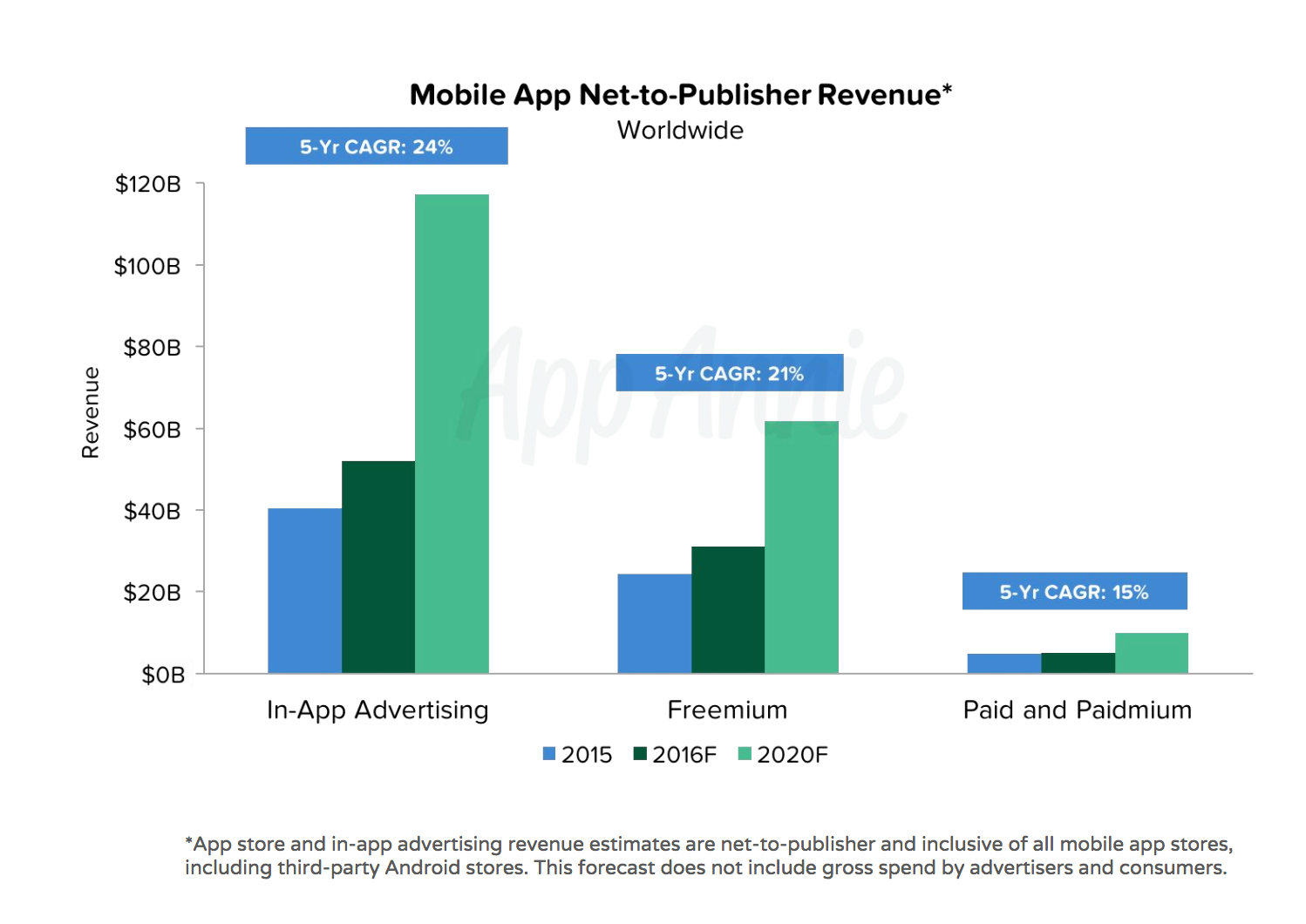Pay to Download
The most straightforward way for an application to make money is to charge users to download it. However, with about twice as many free apps as paid, paying for an application without getting to try it first turns many users away. In-depth descriptions, stunning screenshots, and a robust application will aid in getting users to download your app. A great and valuable user experience will drive positive reviews, which in turn will give future users more confidence that their purchase is a good one.
In-App Purchases/ Freemium
A very common choice of monetization is done through in-app purchases. By just paying a buck or two, users can gain in-app perks or exclusive content. In order for this to be successful, you need to keep your users engaged with the application and provide in-app purchases that they will find valuable. Almost any application can benefit from this strategy. Value can come from additional content, new features, in-app currency, subscriptions, or even a priority or VIP status.
Monetization Through Advertising
According to App Annie’s Monetization Report, in-app advertising is expected to greatly surpass freemium, paid, and paidmium. Its share of app store net revenue has been anticipated to grow from 58% in 2015 to 62% in 2020.

AdMob
There are several ad serving companies that you can include in your application to serve ads to your customers. We recommend using Google’s AdMob. They make it easy by managing the ads for you. You just provide the location and format of the ads you want and AdMob will populate them. Applications that do well with in-app advertising are ones that are used frequently.
e-Commerce Monetization
Users download some applications for the express use of spending money. With e-commerce applications, users are looking for a fast, easy way to find and receive goods and pay you money. According to App Annie, last year shopping apps grew 30 percent in revenue year-over-year during November. It’s common for brick and mortar stores to have an online or application presence to drive purchases. One user may only use the application to research potential purchases before buying in-store while another may make a purchase through the application after visiting in person. Either way, having an application has helped make another sale!
Apps for Hardware Management
Sometimes an application comes with a purchase. Take Nest thermostats or Yale locks for example. Users pay for the application indirectly when they purchase the product. It makes little sense to charge them twice because the hardware and software are heavily dependant on each other.
Apps for Businesses
Just because an application doesn’t directly bring in funds doesn’t mean that it is not useful or not making the company money. Businesses can, and do, operate anywhere. In the office, at home, on vacation, visiting family- it has gotten easier and easier to stay connected. Applications have helped this become a reality. Several of the applications we have built over the years have been for businesses wanting to streamline their processes, manage their employees, or somehow improve their employees’ or customers’ lives. While this may be hard to measure, it still can bring value to the company and be profitable by saving time or improving customer experience thus making them more likely to purchase again.
When planning to build an application, keep monetization in mind. Whatever your application does, it should bring some sort of value. When it comes to application development, we are the experts and are happy to assist in adding value to your next project.



